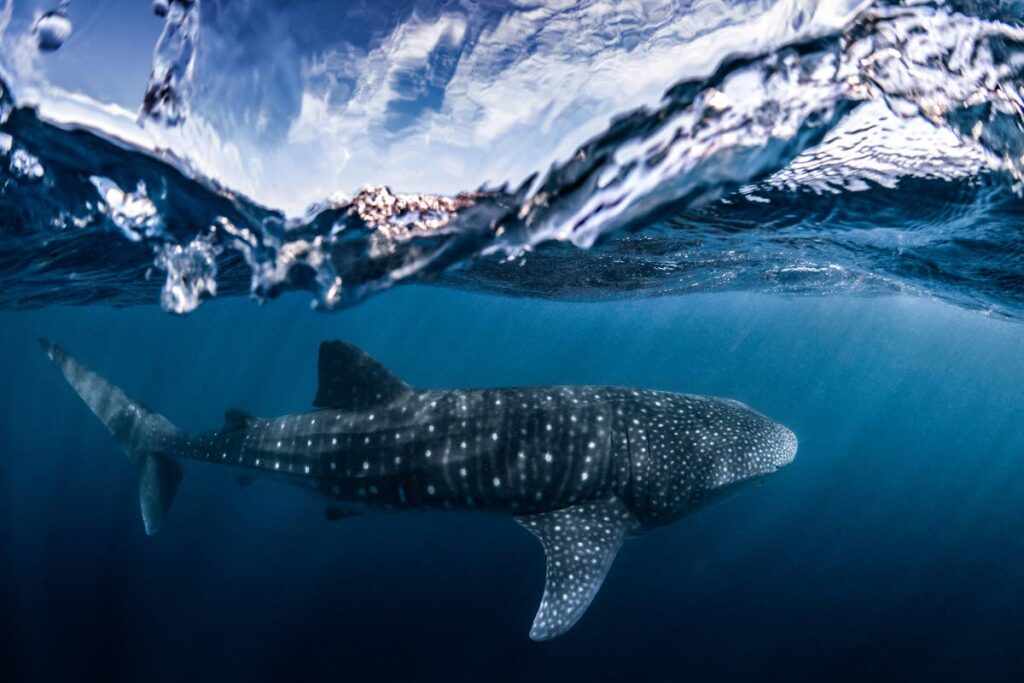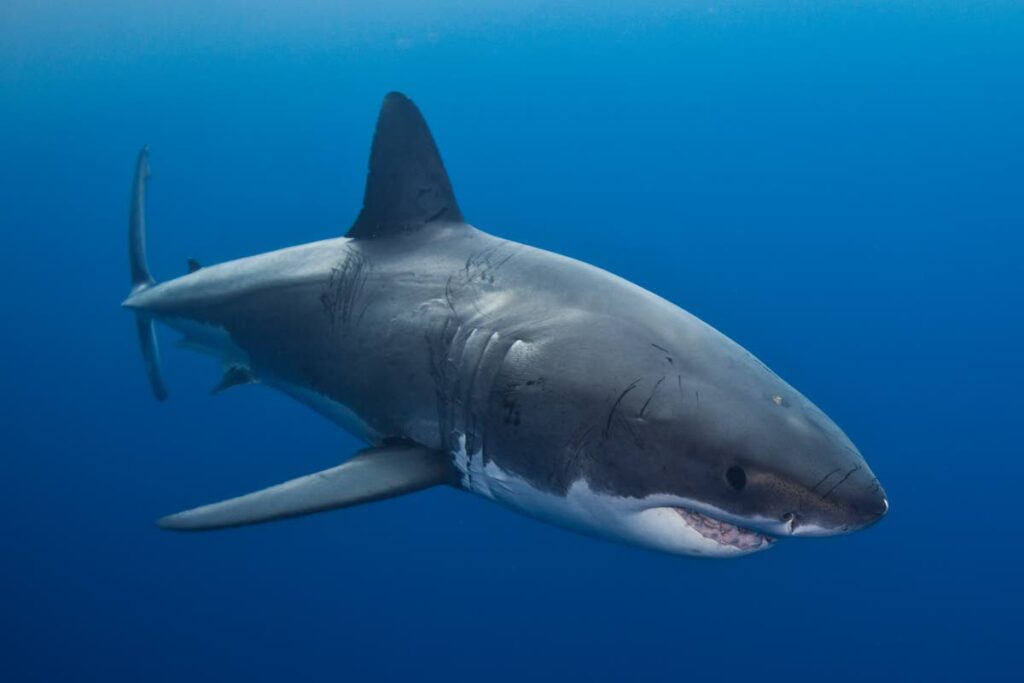Megalodon and modern sharks

Dr Anjani Ganase discusses recent research and findings about sharks.
Megalodon the super predator
The megalodon (big tooth) sharks were massive predators that roamed the oceans for over 13 million years until they went extinct three million years ago. During that time, megalodons could grow to 15 metres in length. The closest rivals were the great white sharks that overlapped with the megalodons for about 400,000 years, but were dwarfs – five metres – in comparison. From the size of the skeleton and teeth – one tooth is the size of a hand – the megalodon was a major predator on the high seas feeding on large fish, whales, and even other sharks. Scientists found a fossilised whale bone with markings and pieces of megalodon teeth in it. Recently scientists were able to chemically confirm that megalodons were on the very top of the ocean food chain, capable of feeding on whatever, whenever it wanted.
Through nitrogen found in the teeth of a megalodon species – Otodus megalodon – their position in the food chain was revealed. Algae and plants take in nitrogen from the environment which in turn gets consumed by herbivores and passed on to their predators. There are two naturally occurring isotopes of nitrogen – N14 and N15. N14 is usually passed out of the body as waste, N15 is heavier and builds up in the body over time. The higher up the food chain, the greater the proportion of N15 to N14. Scientists found that the ratios in megalodon grossly surpassed any predators known, making them much higher in the trophic status (position on the food web) and it is likely they fed on today’s top ocean predators.
New shark species in the Indian Ocean
Two new shark species were identified in the western Indian Ocean off the coast of Zanzibar and Madagascar. The new species belong to the rare group of six-gill saw sharks bringing the total species up to three. Saw sharks have a flat elongated snout with a row of teeth along the edge, resembling a chain saw, which is used to slash prey. Six-gill saw sharks are considered to be rare and more primitive than other saw sharks (most sharks have five gill slits). The discovery was brought to the attention of a scientist, who was called by fishermen thinking they came across a new variant of the ray but analysis of specimens revealed two new species. The species are known as Kaja’s six-gill saw shark (Pliotrema kajae) and Anna’s six-gill saw shark (Pilotrema annae) after the daughter and niece of the discoverer taxonomist, Simon Weigmann. Kaja’s six-gill saw shark are found at depths of 214 - 320 metres, and physically has a longer snout, different colourations and their barbels (projections around the mouth used for feeding along the sea floor, similar to catfish), are positioned differently from Anna’s six-gill saw shark. Anna’s six-gill saw shark occurs at shallow depths (20 - 35 metres) off the coast of Zanzibar, have other physical modifications around the mouth, and their barbels are positioned two-thirds of the way down their snout.
Orcas vs great white sharks
Scientists have speculated that the absence of great white sharks in recent years along Gansbaai in South Africa is the result of a pair orcas actively hunting them. In 2017, the bodies of five great white sharks were washed up onshore without their livers and heart. The orcas generally targeted sub-adult sharks. These killings prompted the immediate evacuation of the great whites in the area and occurred periodically over the following two to three years. In the absence of the great whites, another predator, the bronze whaler shark, moves into the area to feed. Great white sharks control the behaviour of fur seals that feed on the endangered African penguins. The absence of the sharks may result in shifting food web dynamics. While it is too early to know, scientists continue to monitor the orcas and sharks in the area.

Shipping threat to whale sharks
Ship strikes are commonly associated with marine mammals. In some areas of the world, it is mandated to have spotters on board dedicated to scanning the horizon for whales to avoid such incidents. Whale sharks are commonly found slowly swimming near the surface of the ocean feeding on zoo plankton in the water column and are at risk of being struck by large vessels. Tagging data from whale sharks would stop abruptly and then descend into the deep when the whale shark dies from a collision. Whale shark scientists around the world mapped movements of whale sharks and overlaid it onto the global shipping routes. They found that 92 per cent of the areas highly used by whale sharks were along major shipping routes, while 50 per cent of the upper vertical space in the water column utilised were also frequented by larger vessels. These collisions are likely to have significant impact on the regional populations of whale sharks.
Teeth in the womb
Shark teeth are commonly found in fossil records and the sediment because sharks have several rows of teeth that move forward every time a tooth is lost. With the exception of their teeth, sharks they do not have great fossil records, because they are mainly cartilage. Scientists began looking into the changes in the teeth over the life cycle of a shark. Using the tiger shark, they first observed that baby tiger sharks as embryos in the womb already form teeth and even before the shark is born, the teeth are already being replaced with the old teeth being swallowed by the baby shark. The first set of teeth of the shark are not serrated but by birth, the second set of teeth has one set of serrations. As the shark ages, the teeth become more complex with more and more serrations.


Comments
"Megalodon and modern sharks"